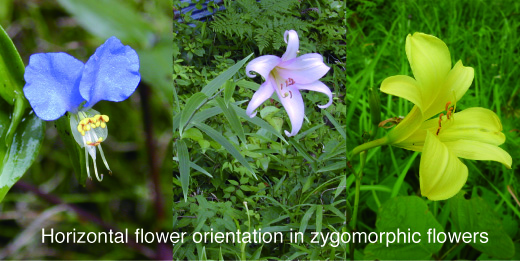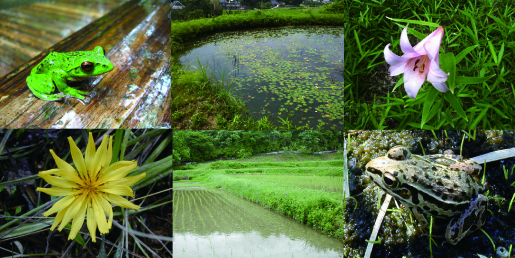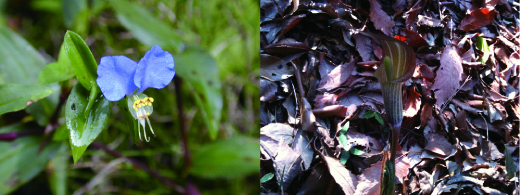
Flower-pollinator interactions
Why is there huge diversity in flowers?
We try to answer to this question through field and experimental studies. We have investigated the evolution of floral characteristes (floral guide, flower orientation, inflorescence design, mating system, phenology, sex expression, etc) under pollinator-mediated selection. We also examine how flower-pollinator networks are structured by community structure and species traits.
Selected papers
Habitats of endangered and rare species in SATOYAMA
Why are species living around agricultural lands now endangered?
In an East Aisan traditional agro-forestry ecosystem, SATOYAMA, we find many endangered species around paddy terraces. We investigated a unique distribution pattern of endangered herb species on levees around paddy terraces and the mechanisms to generate this pattern using vegetation and environmental surveys and GIS analyses.We also examine distributions of plants and animals (such as butterflies, grasshoppers and frogs) within a rural-urban gradient around the Osaka-Kobe metropolitan area. In Japan, paddy field diversity is threatened by land use changes such as paddy consolidation, abandonment and urbanization. We aim to clarify the mechanisms of the diversity declines in plants, insects and frogs via these land use changes.

Selected papers
Urban ecology
Does urbanization cause local population extinction?
Currently, more than 50% of the global human population resides in urban areas, and as a result, the impact of urbanization on biodiversity decline has been increasing. Urbanization causes changes in habitat conditions and can cause the introduction of alien species, both of which lead to declines of native species in natural and agricultural landscapes. In Japan, paddy fields are decreasing in flat areas by urbanization and some frogs (Pelophylax nigromaculatus and Rhacophorus schlegelii), flowering plants and the pollinators (bees and syrphid flies) that used to be common species around paddy fields become endangered. We investigate the effects of habitat loss, degradation and fragmentation on distributions, genetic structures and interactions of species living around the Osaka-Kobe metropolitan area, which was listed as one of the world megacities.
Related papers
Where are local biodiversity hotspots in river ecosystems?
Confluence effects on habitat and plant diversity
In riparian zones along the banks of streams and rivers, flooding often causes large changes in environmental conditions immediately downstream of confluences. In turn, spatial heterogeneity in flooding along rivers and streams likely affects local species diversity. We investigated the positive effects of river confluences on diverse habitat creation and enhancing plant species diversity.Related papers
